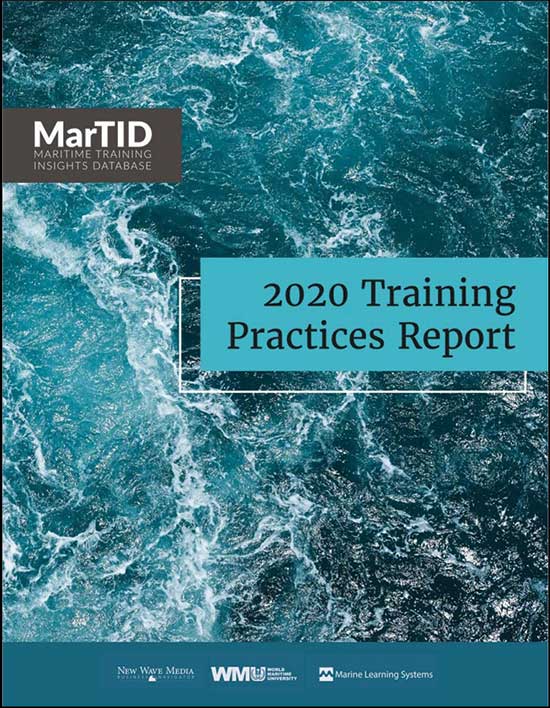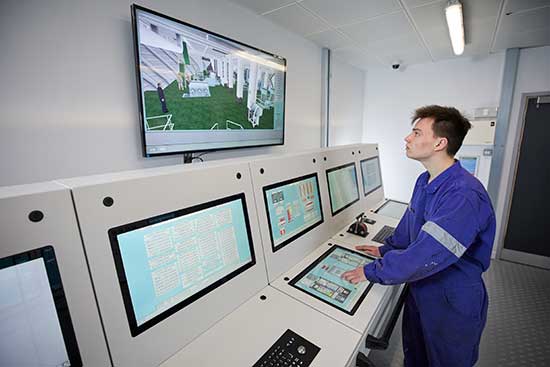
A new study suggests that the Covid-19 crisis is turning out to be a powerful driver of change in seafarer training, and is paving the way for the introduction of innovative flexible and remote learning systems. Andrew Linington reports
The gap between face-to-face teaching and internet-based e-learning was already closing before the pandemic began. Now the use of tech in teaching is set to increase substantially as a result of 'the increased acceptance – and need to – conduct business remotely, online', according to the third global Maritime Training Insights Database (MarTID) survey.
Published by the World Maritime University, Marine Learning Systems and New Wave Media, the report also warns that feedback from seafarers paints a relatively bleak picture of their training experiences and outcomes and shows the significant scale of opportunity for improvement.

In the foreword to the report, Nautical Institute chief executive officer Captain John Lloyd notes that adoption rates for new training solutions have proved high, and that this trend has also helped to deliver significant savings in associated travel and accommodation costs – both for seafarers and employers.
'In this context, robust and secure assessments are a prerequisite and so too is approval by the relevant flag administration,' he says. 'It is a credit to the decision-makers on many administrations that they have quickly adopted alternative solutions to training and assessment. Such flexibility has helped keep our seafarers in date for their qualifications and up-to-date with recent innovations.'
Even before the pandemic struck, the MarTID researchers found that there had been a 16% reduction in face-to-face training over the previous year – and that 23% of seafarers, shipping companies and training institutions expected to use less of it in the coming year.
Although classroom training continues to be the most common training method, the survey found that use of e-learning and simulation is growing rapidly, and operators plan to increase their use of technology to manage crew training, competency and assessment.
They also plan to make more use of video-based e-learning, simulation, coaching and mentoring in the coming 12 months.
Some 56% of training institutions had increased the use of internet-based e-learning in the past year, and 69% expected this to increase further in the year ahead.
Almost two-thirds of ship operators had increased their training budgets over the previous year, with two-thirds spending between 2% and 10% of their operating budget on training.
However, seafarers are increasingly having to self-fund their training – with 43% having to pay for their own training and 17% spending between 10%-20% of their income on training.
Nearly half the seafarers surveyed said their personal expenditure on training has increased over the past five years and almost 60% believe it will increase even more over the coming 12 months.
As well as STCW-related courses, seafarers are most commonly having to spend their own money on certificates of competency, qualification upgrades, refresher training, revalidation, medical, safety and life-saving, and advanced and specialised courses.
Researchers also found that seafarers did not, in general, view the training they receive favourably – whether in the context of shipping companies or in maritime education and training institutions. Barely half consider that the training quality standards are high.
The report warns that this finding is worrying and should be addressed by all stakeholders.
'It is one thing to have systems in place and quality certification that purport to show optimal training levels. It is quite another to have these systems work such that the recipients of the training are competent and deem themselves as such, thus boosting their confidence to take appropriate actions in high-risk situations.'
Seafarers are increasingly having to self-fund their training ‒ with 43% having to pay for their own training and 17% spending 10%-20% of their income on training The MarTID report findings
Vessel operators said the top four factors determining their training commitments were the desire to reduce accidents, to comply with regulatory requirements, to manage crew competency and to increase commercial efficiency and effectiveness.
Operators are concerned about the increasing age profile of their officers and the long-term loss of knowledge and experience.
However, the majority of seafarers feel that their employers do not assess how the training they receive affects their performance. Although 50% of operators and 79% of training institutions follow externally defined standards for training quality, there is 'room for improvement in quality assurance of learner assessments, in particular with reference to alignment of intended learning outcomes, learning activities and learner assessments in the context of vessel operators'.

Engineroom simulator at Warsash maritime training centre, Solent University
A relatively low percentage of seafarers feel that their feedback is considered by employers when offering suggestions for improved training and only a small percentage feel that their instructors make an effort to provide feedback on their training progress. More than three-quarters of the seafarers taking part in the survey said that their employers do not assess the impact of training on their work performance.
Seafarers said they most frequently received training related to safety, ship operations and environmental protection, and least frequently had training on crew welfare and health.
Asked what additional training they would most like to have, more than 18% of seafarers cited simulator training, followed by ship handling and practical on-the-job training.
Other areas of additional training that seafarers would welcome include accident investigation, cross-vessel operation, training on different equipment, emergency preparedness, ship automation and electronics, mental health, and transferring skills and knowledge shore-side.
More than 40% of seafarers said they did not receive mentoring or coaching, and between 45% to 50% report high or medium amounts of simulation or e-learning in their training.
The research was completed at the end of May 2020, just when the full impact of Covid-19 was being felt globally. MarTID says the full impact of the pandemic upon seafarer training will be assessed in the next survey.
'Seafarers continue to serve the global community as facilitators of a key link in the global logistics chain, particularly when the challenging events of the Covid-19 pandemic are considered,' World Maritime University president Dr Cleopatra Doumbia-Henry said. 'Their competence, development, knowledge, skill retention and their transfer to actual work settings are as critical as ever. Training needs to be kept in focus.'
Tags
